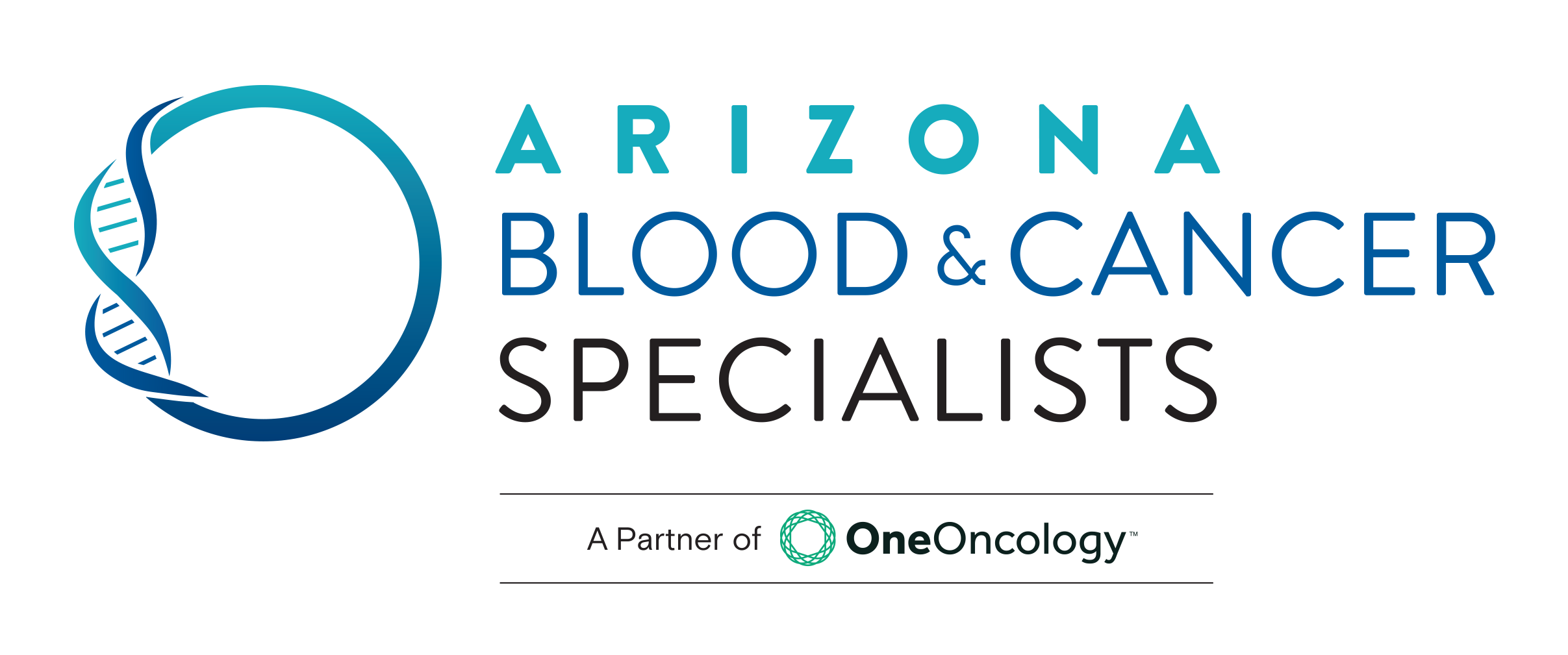Knowing Your Treatment Options: What Treatment is Best for Your Cancer
Discovering the daunting news of a cancer diagnosis can be incredibly overwhelming, leaving you and your loved ones with countless questions. The first step is to find a supportive care team. It’s also important to get a second opinion, so that you can learn more about your disease and get different perspectives on how to best treat the type of cancer you have. Getting a second opinion can also reassure you and your family that you have been diagnosed correctly and have the best plan for care. From there, you can discuss your treatment options and dive deep into the treatment details, benefits, risks, and side effects. Below, you’ll find a list of the types of treatments Arizona Blood and Cancer Specialists offer, along with the treatment delivery methods provided. These treatments can be used as a single type of treatment or your oncologist may use them together in a combined approach to treat your cancer. After reviewing these options with your cancer care team, you can move forward with selecting the treatment option that works best for you.
Types of Treatment
Chemotherapy
Chemotherapy can be a single drug, or a combination of drugs used to slow or stop the growth of cancer cells throughout the body by preventing their ability to divide and reproduce. It can be used alone to treat cancer and in some cases, it is used in combination with surgery or radiation treatments. The schedule for chemotherapy is referred to as a cycle. A cycle will include treatment days and rest days.
Immunotherapy
Immunotherapy uses the body’s own immune system to fight certain types of cancer. Immunotherapies activate a stronger-than-normal immune response and train the body to identify and destroy cancer cells. This type of treatment may be used by itself or with other therapies.
Targeted Therapy
Targeted therapy blocks the growth of cancer cells by interfering with specific molecules needed for tumor growth. Cancer cells typically have changes in their genes that make them different from normal cells. Tests will determine if you have the biomarker that will likely respond to a given targeted therapy. Targeted therapies may be combined with chemotherapy or immunotherapy.
Surgery
Surgery removes a tumor and surrounding tissue that might contain cancer cells. With certain cancers, the chemotherapy may be given as a treatment prior to surgery in an effort to shrink a tumor’s mass. This is known as neo-adjuvant chemotherapy. When it is given after surgery, to kill any remaining cancer cells in the body, it is called adjuvant chemotherapy. It can be used to delay the progression or prevent the recurrence of cancer.
Radiation Therapy
Radiation therapy uses different types of high-energy radiation to shrink or kill cancer cells. It can be delivered by a machine from outside the body or by radioactive materials that are placed inside the body. Radiation therapy may be used alone or in combination with chemotherapy, immunotherapy and/or surgery.
Clinical Trials
Clinical trials are voluntary research studies designed to answer specific questions about treatment interventions. They are the primary way researchers generate information on safety and efficacy to improve treatment effectiveness and delivery methods. Arizona Blood and Cancer Specialists partners with OneOncology Research Network and with Arizona Clinical Research to offer clinical trials in many of our clinics.
Treatment Delivery Methods
Intravenous (IV) directly into the vein:
- Peripheral Lines use the veins in arms or hands. It is a temporary thin, bendable tube that slides into your vein with the assistance of a needle.
- Port-a-Cath (Port) is a small disc-like device implanted under the skin by a surgeon or radiologist. Medication is administered intermittently by placing a small needle through the skin, into the reservoir. When the needle is withdrawn, the reservoir cover reseals itself. Hundreds of needle sticks can be made over the lifetime of a port, ranging from months to years. If you have a port implanted, bring the device ID card with you for your treatments.
- PICC (Peripherally Inserted Central Catheter) Lines are inserted through a sheath into a vein under ultrasound guidance, usually in the arm. One PICC may have a single, double, or triple lumen each with its own external connector. This allows medication administration and blood draws without a needle stick. PICC lines can stay in place for weeks to months.
- Hickman or Groshong catheter: A Hickman is a small, soft tube that is surgically placed into a large vein in your neck or chest. Much like PICCs and Ports, they may remain in place for an extended period and can be used for medication administration and blood draws.
Oral
Medication that is taken by mouth in the form of pills, capsules, tablets or liquids.
Injection/Shot
Administration through a needle and syringe underneath the skin (subcutaneous) or into a muscle (intramuscular)


